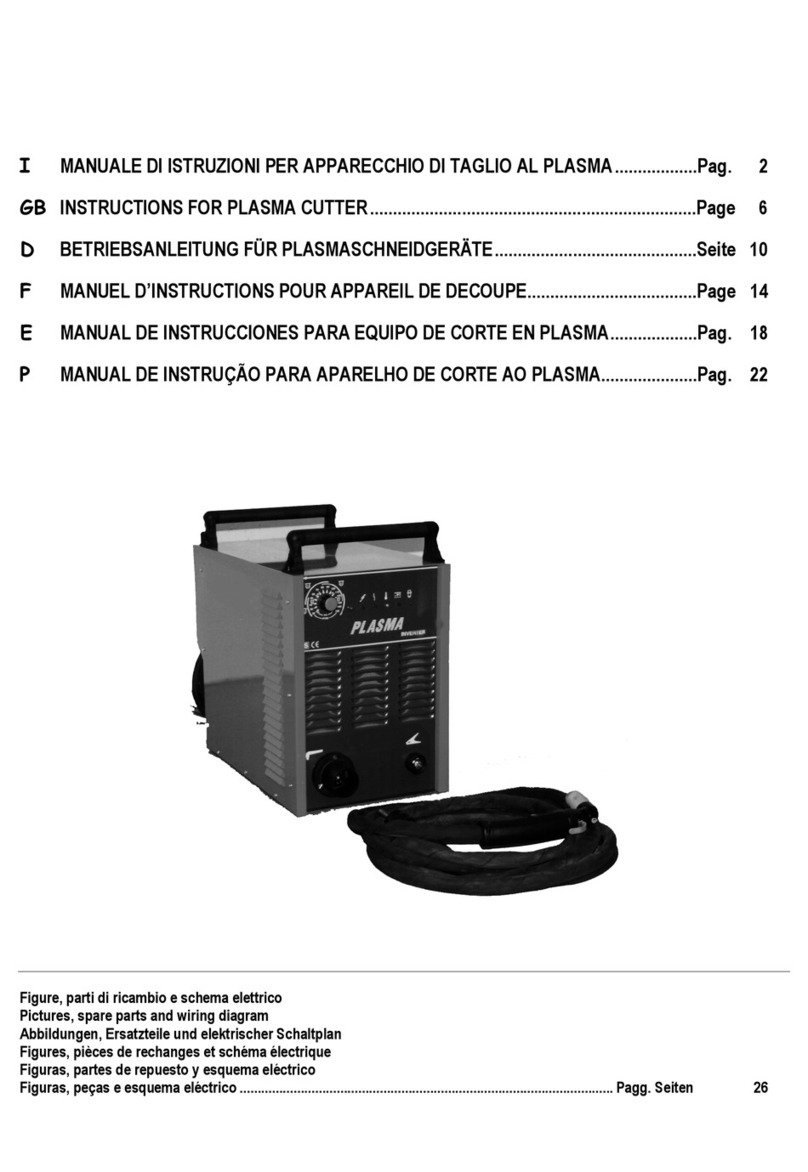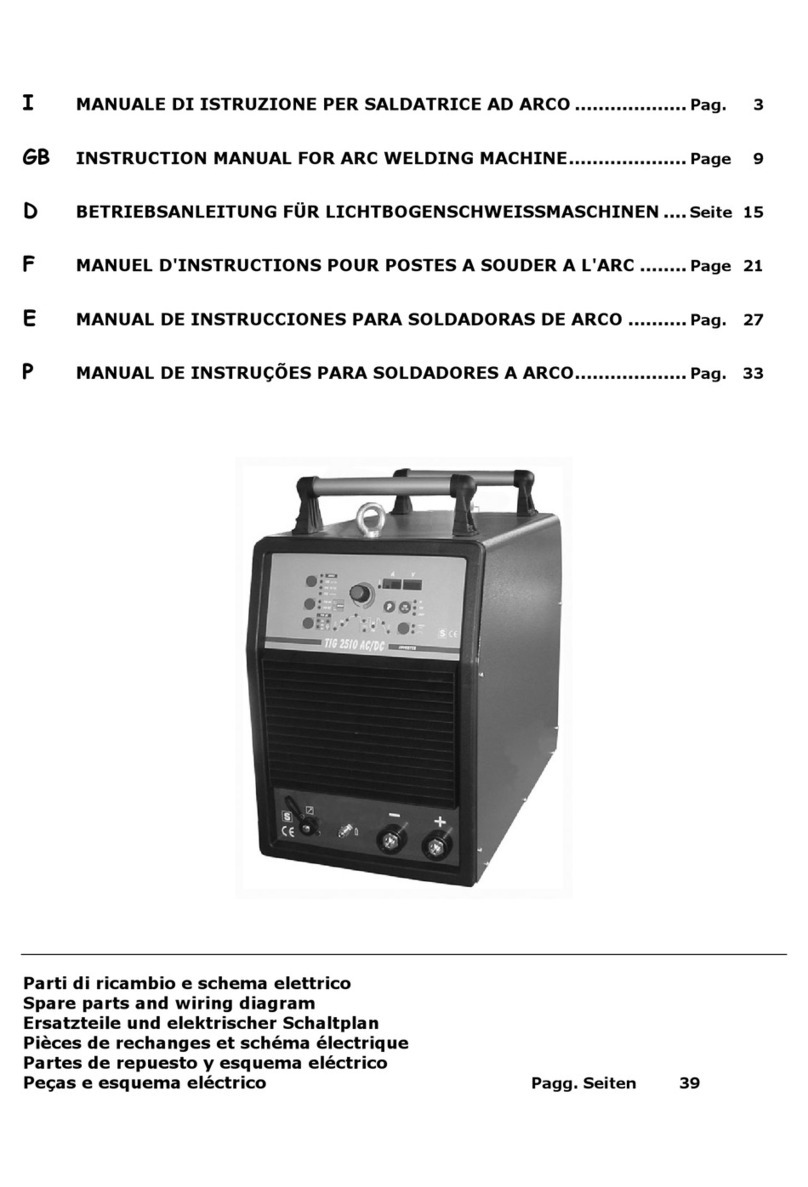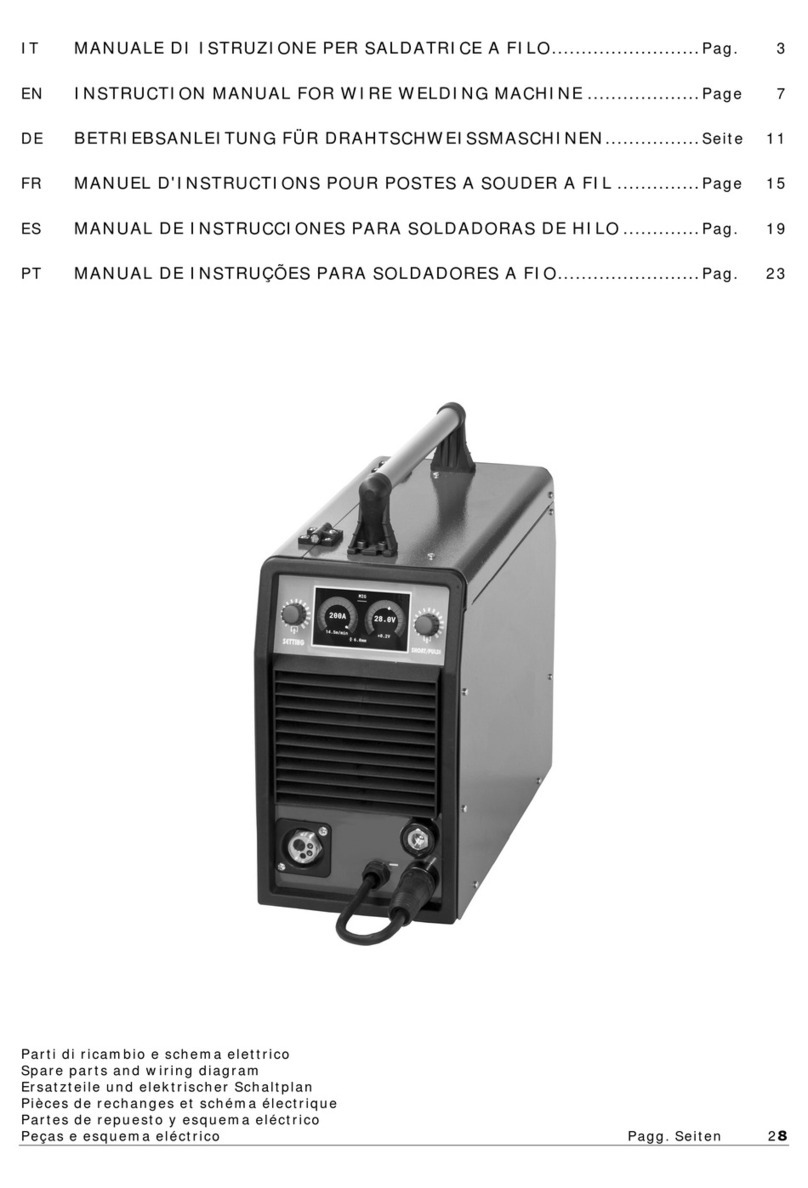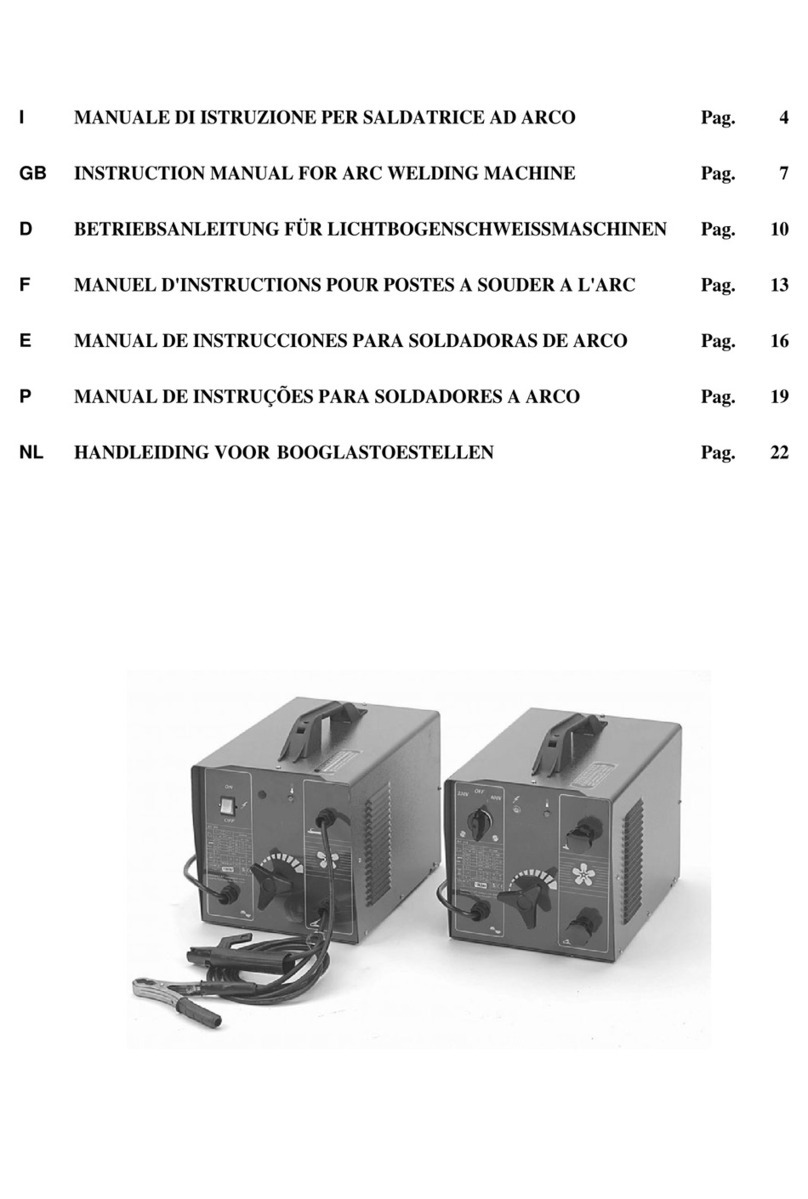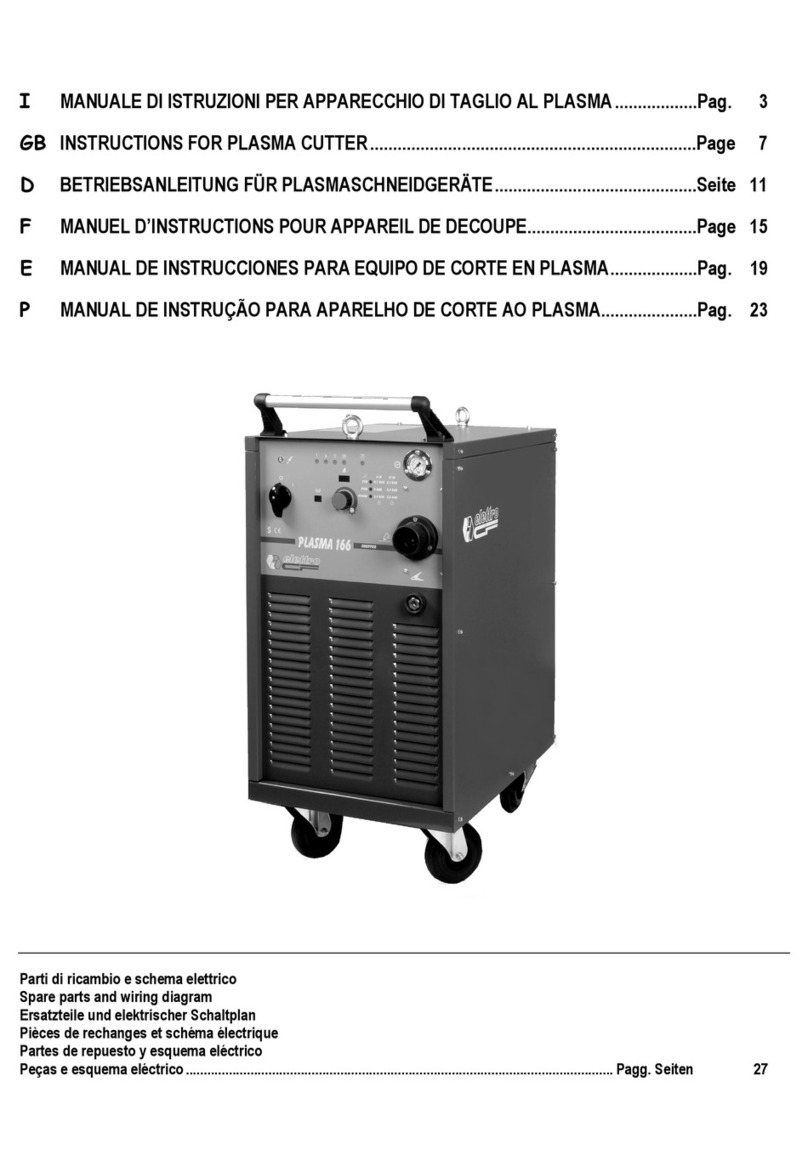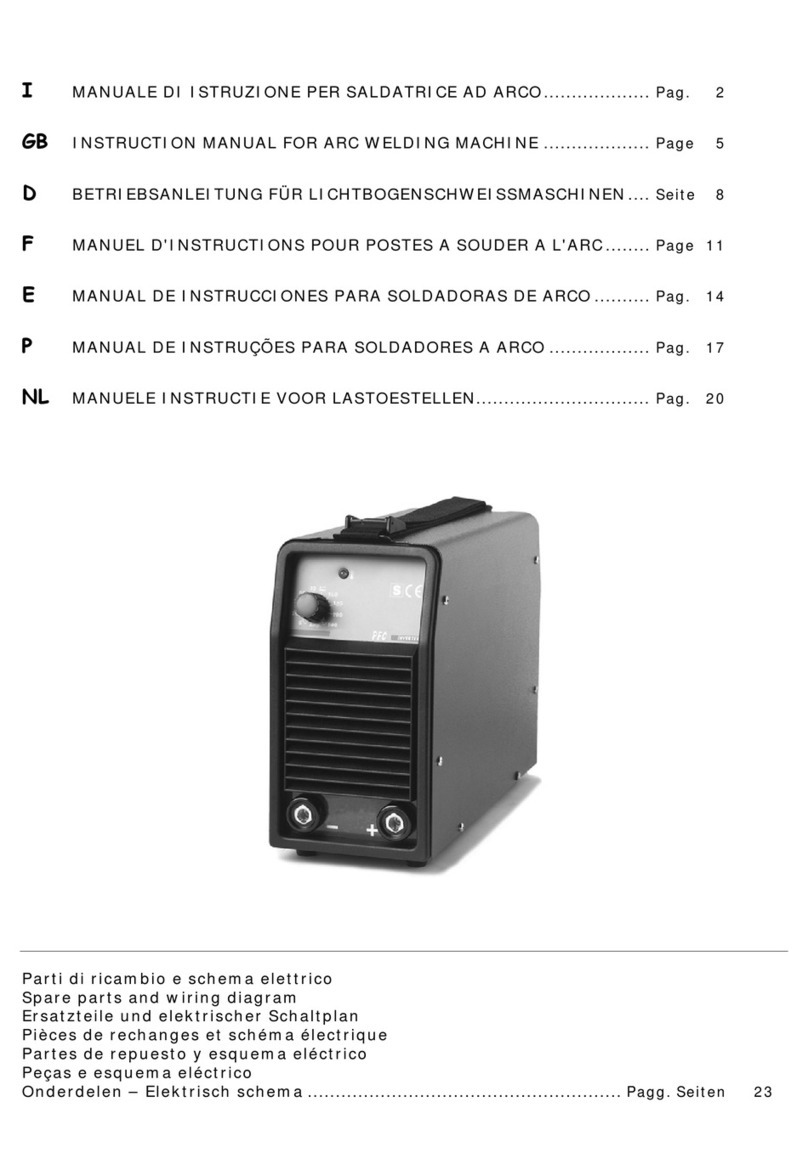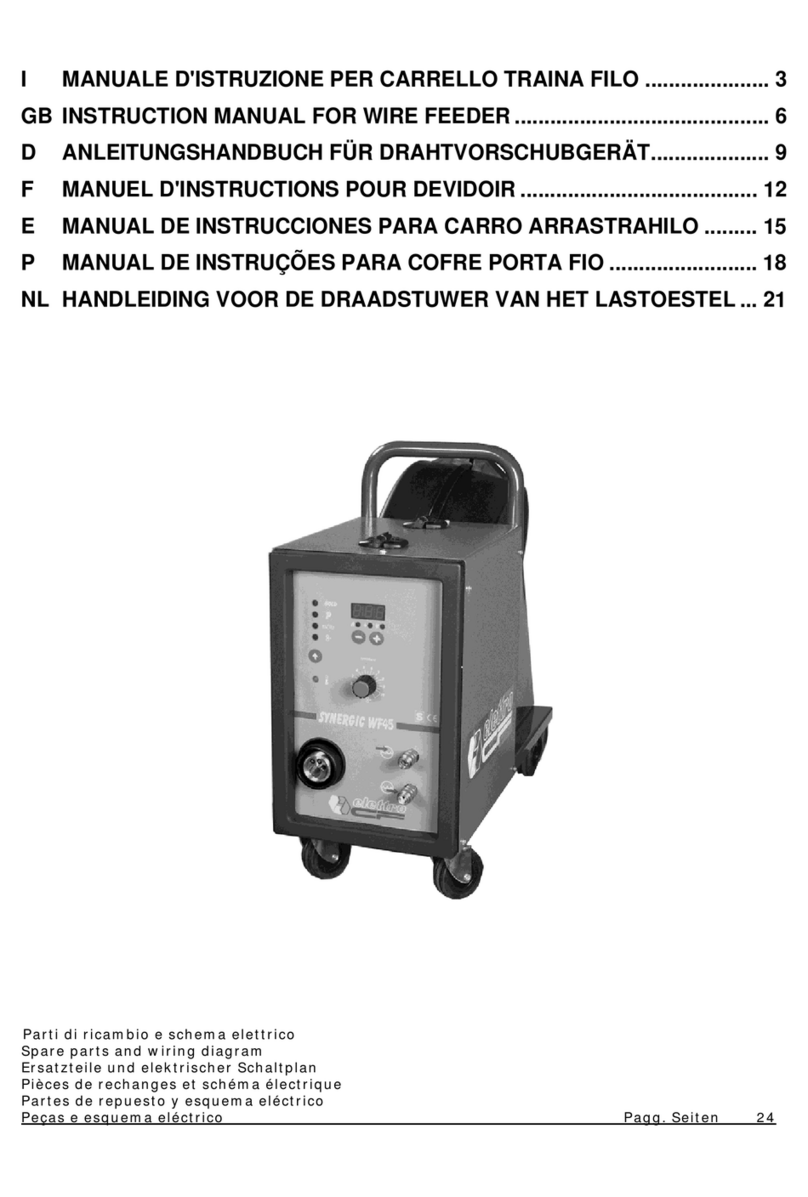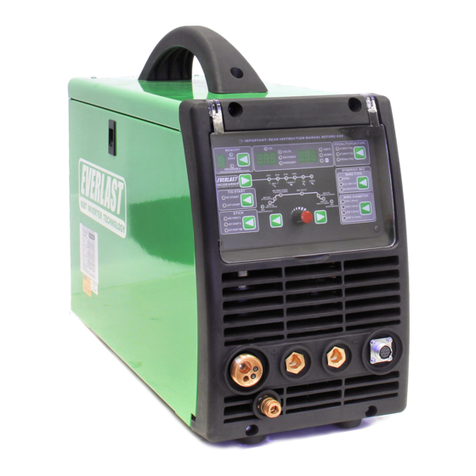
goggles with protective side eye guards.
- Welding sparks can trigger fires.
- Do not weld or cut anywhere near inflammable materials,
gasses or vapours.
- Do not weld or cut containers, cylinders, tanks or piping unless
a qualified technician or expert has checked that is possible to
do so, or has made the appropriate preparations.
- Remove the electrode fro the electrode holder gripper when
you have completed the welding operations. Make sure that no
part of the electrode holder gripper electric circuit touches the
ground or earth circuits: accidenta contact could cause
overheating or trigger a fire.
- The magnetic fields deriving from the welding current may
interfere with electrical and electronic equipment. People fitted
with vital electrical devices (pacemakers, etc.) should consult
a doctor prior to coming into contact with welding equipment.
- This welding machine satisfies the requirements of the
technical product standard exclusively for professional and
industrial use. Compliance with electromagnetic compatibility
for domestic use is not guaranteed.
The welding machine is installed and used under your own
responsability. In the event of electromagnetic disturbance,
this should be reduced so that it does not cause problems.
Ask a competent expert for technical assistance if required.
Welding in condition of risk
- If welding needs to be done in condition of risk (electric
discharge, suffocation, the presence of inflammable or
explosive materials), make sure that an authorized expert
evaluates the conditions beforehand. Make sure that trained
people are present who can intervene in the event of an
emergency. Use the protective equipment described in 5.10;
A.7; A.9 of the IEC or CLC/TS 62081 technical specification.
- If you are required to work in a position raised above ground
level, always use a safety platform.
- If more than one welding machine has to be used on the same
piece, or in any case on pieces connected electrically, the sum
of the no-load voltage on the electrode holders or the torches
may exceed the safety level. Make sure that an authorized
expert evaluates the conditions beforehand to see if such risk
exist and adopt the protective measures described in 5.9 of the
IEC or CLC/TS 62081 technical specification if required.
Additional warnings
- Do not use the welding machine for purposes other than
those described, for example to thaw frozen water pipes.
- Place the welding machine on a flat stable surface, and
make sure that it cannot move. It must be positioned in such a
way as to allow it to be controlled during use but without the
risk of being covered with welding sparks.
- Do not work with the welding machine hung from the body,
using straps or any other device.
- Do not lift the welding machine. No lifting devices are fitted on
the machine.
- Do not use cables with damaged insulation or loose
connections.
Read this instruction manual carefully before using welding
machine.
The MMA and TIG coated electrode arc welding systems referred
to herein as “welding machine” are for industrial and
professional use.
Make sure that the welding machine is installed and repaired
only by qualified persons or experts, in compliance with the
law and with the accident prevention regulation.
Make sure that the operator is trained in the use and risks
connected to the arc-welding process and in the necessary
measure of protection and emergency procedures.
Detailed information can be found in the “installation and use of
arc-welding equipment” brochure: IEC or CLC/TS 62081.
- Make sure the power socket to which the welding
machine is connected is protected by suitable safety
devices (fuses or automatic switch) and that is grounded.
- Make sure that the plug and power cable are in good
condition.
- Before plugging in to the power socket, make sure that the
welding machine is switched off.
- Switch the welding machine off and pull the plug out of the
power socket as soon as you have finished working.
- Switch the welding machine off and pull the plug out of the
power socket before connecting the welding cables, carrying
out maintenance operations, or moving it (use the carrying
handle on the welding machine).
- Do not touch any electrified parts with bare skin or wet
clothing. Insulate yourself from the electrode, the piece to be
welded and any grounded accessible metal parts. Use gloves,
footware and clothing designed for this purpose and dry,
non- flammable insulating mats.
- Use the welding machine in a dry, ventilated space. Do not
expose the welding machine to the rain or direct sunshine.
- Use the welding machine only if all panels and guards are in
place and mounted correctly.
- Do not use the welding machine if it has been dropped or
struck, as it may not be safe. have it checked by a qualified
person or an expert.
- Eliminate any welding fumes through appropriate natural
ventilation or using a smoke exhauster. A systematic approach
must be used to assess the limits of exposure to welding
fumes, depending on their composition, concentration and the
length of exposure.
- Do not welding materials that have been cleaned with chloride
solvents or that have been near such substances.
- Use a welding mask with adiactinic glass suited for welding.
Replace the mask if damaged; it may let in radiation.
- Ware fireproof gloves, footware and clothing to protect the skin
from the rays produced by the welding arc and from sparks.
Do not ware greasy garments as a spark could set fire to
them. Use protective screens to protect people nearby.
- Do not allow bare skin to come into contact with hot metal
parts, such as the torch, electrode holder grippers,electrode
stubs, or freshly welded pieces.
- Metal-working gives off sparks and splinters. Wear safety
Safety warnings
Instruction manual
GB
6
